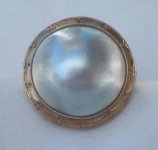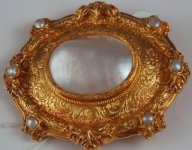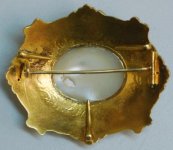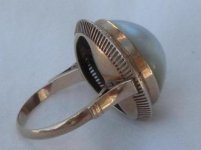Hi All,
Have a question that I hope you can help with. I generally do not like Mabe pearls but then there are Mabe Pearls and Mabe Pearls i.e. cultivated, low quality mabes versus what I believe to be natural Mabe or Blister pearls.
Is this a correct interpretation of mabes natural versus cultivated. Blister pearls are very interesting and have the same flat backs as mabes so, are they from the same oyster Pteria penguin or do they also come from other oysters and clams and if so which ones.
I am thinking that Mabe is a term used for Cultured and Blister is for natural pearls but I think these two names have become inter-twinned in recent years.
I have attached a couple of photos of Blister and a Natural Mabe pearls both claiming to be natural. From the look of them I do believe both to be natural.. I think both are beautiful but from which mollusks do they actually come from?
This has interested me for a long time and I would really appreciate some good information on Blister pearls etc.
I do realise that our pearl experts would know all about them but for most of us they, I believe, are somewhat of a mystery.
Dawn - Bodecia
eBay Seller ID dawncee333 - natural pearl collector and all round pearl lover.
Have a question that I hope you can help with. I generally do not like Mabe pearls but then there are Mabe Pearls and Mabe Pearls i.e. cultivated, low quality mabes versus what I believe to be natural Mabe or Blister pearls.
Is this a correct interpretation of mabes natural versus cultivated. Blister pearls are very interesting and have the same flat backs as mabes so, are they from the same oyster Pteria penguin or do they also come from other oysters and clams and if so which ones.
I am thinking that Mabe is a term used for Cultured and Blister is for natural pearls but I think these two names have become inter-twinned in recent years.
I have attached a couple of photos of Blister and a Natural Mabe pearls both claiming to be natural. From the look of them I do believe both to be natural.. I think both are beautiful but from which mollusks do they actually come from?
This has interested me for a long time and I would really appreciate some good information on Blister pearls etc.
I do realise that our pearl experts would know all about them but for most of us they, I believe, are somewhat of a mystery.
Dawn - Bodecia
eBay Seller ID dawncee333 - natural pearl collector and all round pearl lover.






